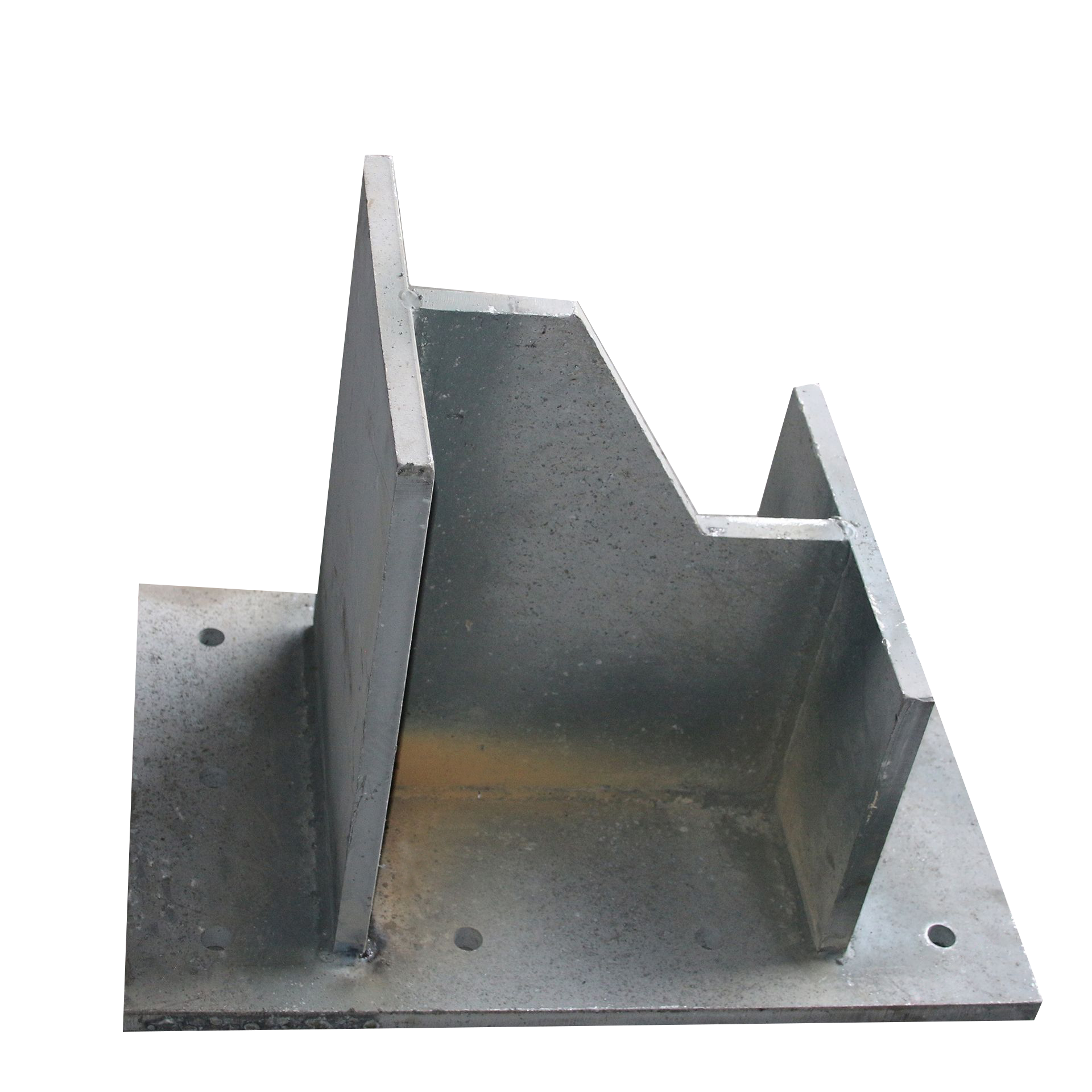Bridge anti-drop-beam retaining blocks
The anti-drop-beam blocks for high-speed railway bridges are an important seismic safety device. The
As a professional manufacturer of steel embedded parts, we undertake the production task of bridge anti-drop beam blocks. We will combine steel structure processing and concrete prefabrication technology, and achieve efficient and high-quality production through the following standardized procedures:
1. Selection of raw materials
Main material: Q355B/Q420B high-strength steel plates (tensile strength ≥ 470 MPa), and the embedded anchor bars use HRB400E seismic-resistant steel bars.
Anticorrosion: Hot-dip galvanizing (zinc layer ≥ 80 μm) or epoxy zinc-rich primer (dry film thickness ≥ 60 μm).
2. Steel plate cutting and blanking
Using a CNC plasma/arc cutting machine, the base plate, ribs and embedded anchor components of the guard block were processed according to the designed dimensions. The bevel angle of the cut was controlled within ≤ 1°.
Welding process: CO₂ gas shielded welding is used to weld the steel framework, with particular attention to control.
Welding grade: Grade 1 for butt welds, Grade 2 for fillet welds (UT inspection sampling rate 10%). Double-sided welding of embedded anchor bars and steel plates (weld length ≥ 5d, d is the diameter of the steel bar).
3. Mold assembly and pre-installed component positioning
Customized combined steel formwork: The inner cavity dimensions of the mold are enlarged by 5mm compared to the design value (to account for the concrete shrinkage). Adjustable positioning slots are set to fix the embedded parts.
Precise positioning of embedded parts: The plane position of the embedded steel plates is accurately calibrated using a total station (error ≤ 2mm), and the bolt holes are temporarily sealed with PVC sleeves to prevent concrete from intruding.
4. Preservation enhancement treatment
Multi-level protection: Before leaving the factory, steel components undergo hot-dip galvanizing (or sandblasting at Sa2.5 level + epoxy coating). The surface of concrete is coated with silane impregnating agent (penetration depth ≥ 3mm) to prevent chloride ion corrosion.

